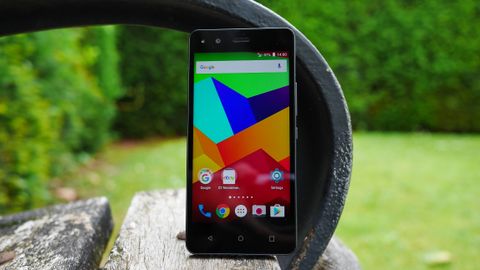Why you can trust TechRadar
At 4.5 inches, the Aquaris M4.5 is something of an irregularity. As screens keep getting bigger and bigger, it is resolutely small.
That proviso unfortunately also extends to its pixel count. With a resolution of 540 x 960, the Aquaris M4.5 manages to squeeze in around 245 pixels per inch. This is below "Retina" territory, meaning that the human eye can still pick out errant pixels.
In everyday use, I found that this wasn't too bothersome. Different screen sizes warrant different use-cases. At 4.5 inches, the Aquaris M4.5 was never designed for constant video playback, unlike the LG G5, just maybe the odd YouTube video. This proved to be the case in my experience.
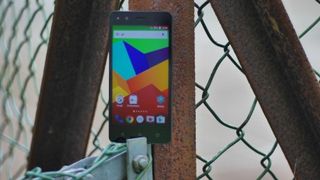
Reading on the commute, watching the occasional video and indulging in the odd spot of casual gaming, there are factors that count beyond the number of pixels, and it is here that the Aquaris M4.5 scores well. In bright sunlight it gets adequately bright to remain readable, and can become quite dim for bedtime reading.
Being an IPS display, viewing angles are consistently strong, while the so-called "Quantum Colour+" technology used by BQ boosts the saturation of the screen, meaning it has that 'pop' that can wow in the shop.
One small concession to the price point is the type of protective glass used. This isn't the well known "Gorilla Glass", instead being "Dragontrail Glass", a Japanese alternative that has mostly failed to gain traction outside of its own country.
In practice, I can't say anything regarding a difference in durability (I treat every phone like a child when it comes to potential damage), but it doesn't seem quite as resistant to fingerprints as some other phones. Normal folk will likely notice no difference.
Android, pure and simple
The subtle design philosophy of the hardware is one that is clearly adhered to closely by BQ, for it applies to the software too.
Many manufacturers lure you in with the promise of nice hardware, only to present a software experience akin to beating one's head against a brick wall (*cough* TouchWiz *cough*). Here, we are greeted with an almost stock version of Google's operating system.
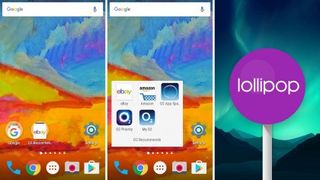
What this means is no duplicate email apps, no duplicate calendar apps, no in-built services, no apps that cannot be deleted, no Galaxy app stores and no RAM managers. After an LG, Huawei or Samsung phone, it is something of a relief.
Those purchasing the phone from O2 will be treated to some pre-loaded bloat however, consisting of the "My O2" app and the "O2 Priority" app, both of which can be swiftly uninstalled – not simply 'deactivated'.
BQ has loaded in a few small customisations to the experience however. Double-tap to wake makes a nice addition, while a scheduled power-off and power-on time can be set – useful for those who like to turn their phone off while sleeping.

The notification LED can also be customised to a host of different colours for different situations, in what proves to be a nice touch.
This simple approach to software has some big benefits when it comes to long-term support too, as it is far simpler to upgrade when there isn't a cumbersome skin to manoeuvre around.
Currently the Aquaris M4.5 runs on Android 5.1 Lollipop. I approached BQ, and it has stated that the handset will be receiving Marshmallow, which is something of a rarity nowadays – certainly on the budget side.
LEDs, as far as the eye can see
A few years ago, budget handsets really were the poor cousins of the high-end flagships. There was a real paucity of worthwhile features, screens were very low resolution and unresponsive, processors were exceptionally poor and slow, and battery life was often abysmal.
Cameras were especially rubbish. Tiny sensors were paired with almost non-existent megapixel counts, no auto-focus and not even an LED flash. Even as recently as two years ago, having a flash on a phone costing less than £150 was an exceptional luxury, and my how times have changed.
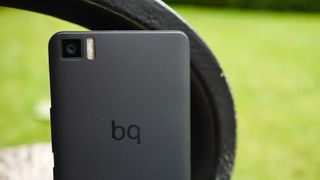
On the rear of the handset rests a dual-LED effort (which doubles as an excellent torch), while the front also has a flash, something that even many flagship devices fail to provide.
Of course, these are mere blinking lights compared the power of a full Xenon flash, but nonetheless provide a little breathing room in otherwise difficult, dark situations.
Both the selfie snapper and the rear-facing camera have an f/2.0 aperture, which is quite wide given their inexpensive provenance, but on such small sensors has only a limited potential to make any real difference to overall image quality, though theoretically should ensure better low-light performance.
A little Dolby in the room
BQ's attempts to differentiate the Aquaris M4.5 from the rest go further than the number of LED lights however, as some efforts have also been made to improve the audio beyond the base offerings that might generally be expected.
To start, the speaker grilles are situated on the bottom of the device, not the rear. This may be something of a pyrrhic victory, but it is undeniably a better position for a speaker than the rear.
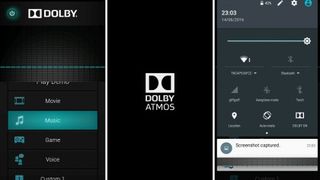
As might be expected, of the two grilles, only one has an audio driver situated behind it. That driver manages to pump out sound at a highly respectable volume for such a cheap effort.
Though not reaching the highs of the Nexus 6P or the HTC 10, it is decently loud and has a reasonable separation between the highs and lows. It does lack bass, but it is certainly adequate for a quick Spotify session while cooking.

This sound is helped considerably by the included "Dolby Atmos" technology. Existing as an app/equaliser, along with a button in the quick settings, this immediately delivers more 'pop' to the sound when activated.
It may be the case that the drivers were a little undercooked to provide a greater perception of 'oomph' when the button is pressed, but nonetheless it definitely seems to work and is a welcome inclusion.
Sean is a Scottish technology journalist who's written for the likes of T3, Trusted Reviews, TechAdvisor and Expert Reviews.
